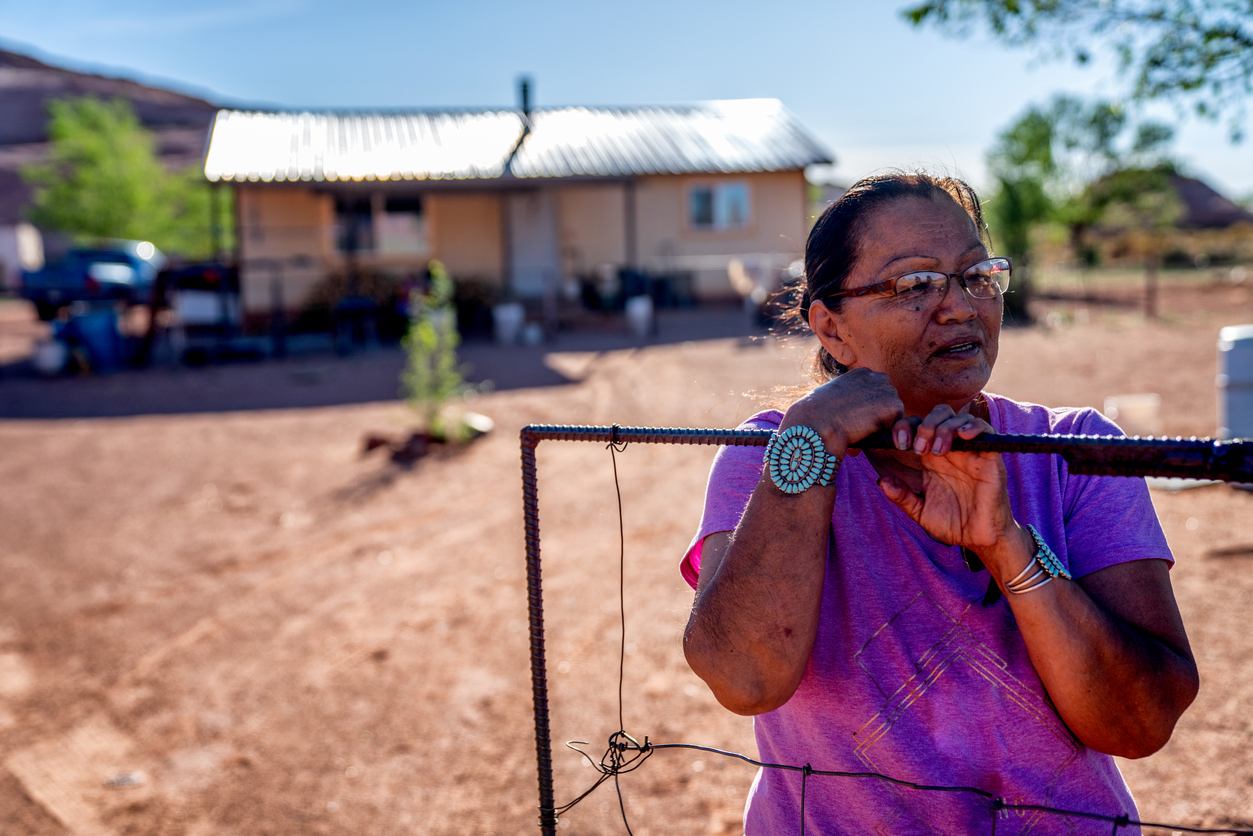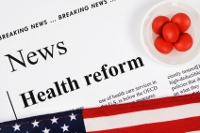
Disparities in Native American health are well documented. American Indians (AI) and Alaskan Natives (AN) have higher rates of diabetes and heart disease than other Americans and an average life expectancy ten years shorter than the U.S. average.
Despite these critical issues, AI/AN populations continue to be significantly underrepresented in biomedical research—even for treatments for conditions which disproportionately impact them.
A variety of factors contribute to this disparity. Healthcare providers serving Native populations are often unaware of research opportunities. Tribal members living in rural locales may not be able to overcome the challenges of distance and transportation access. Clinics serving urban AI/AN populations may not be affiliated with research groups.
The most significant barrier to AI/AN participation may be a legacy of cultural misunderstandings and distrust.
Many Tribes have experienced or witnessed violations of trust in medical research. In the Havasupai diabetes project, for example, academic researchers used blood originally collected for diabetes research from members of the Havasupai Tribe in subsequent, unrelated studies. Participating Tribal members did not knowingly consent to the use of their blood for additional studies, and some of the subsequent research topics, such as schizophrenia, were considered culturally taboo.
One genetic study based upon the collected blood samples suggested that the Tribe’s ancestors had originally migrated from Asia. This publicly challenged the Havasupai’s religious belief that they had originated in their Grand Canyon home and been entrusted with its care.
Securing AI/AN participation in medical research after violations of trust is not easy but is essential for reducing health disparities and moving towards health equity.
At issue
According to the most recent Census data, an estimated 3.7 million Americans identify as AI/AN alone, while another 5.9 million identify as AI/AN and another race group. Together these groups represent approximately 2.9 percent of the total U.S. population.
Importantly, these groups are not monolithic. There are 574 federally recognized AI/AN Tribes in the United States, each distinctive in culture, beliefs, and homelands. Every Tribe possesses nationhood status and retains the rights of self-government. The Constitution, treaties, case law, legislation, and executive orders combine to define government-to-government relationships between individual Tribes and the federal government.
At least one survey found that a high proportion of AIs/ANs would be willing to participate in research that could lead to new medical treatments or benefit others in their communities. However, when recruiting AI/AN populations for clinical trials, it often matters who is sponsoring the research. The preponderance of medical studies in the United States are conducted by government or academic institutions. Yet, Native communities are far less likely to participate in studies undertaken by government agencies or universities than they are to take part in studies conducted by healthcare providers.
Spero Manson, Ph.D., of the Centers for American Indian and Alaska Native Health, attributes this to significant organizational, political, and cultural differences between universities and government agencies and Tribes.
In a 2021 webinar on Supporting Ethical Research Involving American Indian/Alaska Native (AI/AN) Populations, Manson observed that government and academics operate within hierarchical and rule-driven models, while decision-making in Tribal communities is typically “horizontal, precedent-oriented, and consensual.”
Manson and other panelists also acknowledged that the timelines associated with grant-funded studies may force researchers to see their collaborations with Tribes as short-term, closed-ended, and directly tied to funding cycles. By contrast, Tribes value long-term relationships.
The Native American Center for Excellence of the Substance Abuse and Mental Health Services Administration stressesthe importance of appreciating the historical trauma Tribes have experienced in research and exploring the personal histories of individuals who may be involved in studies. Developing this appreciation and establishing genuine relationships with AI/AN research participants requires time that may not be allotted in funding cycles.
Having a lead researcher of AI/AN descent can encourage participation in a project. Yet, AI/AN representation in research design and execution could be declining. According to the National Science Foundation, the number of AIs/ANs earning advanced degrees in science and engineering declined between 2011 and 2019. At a minimum, researchers should enlist Native representatives in project design, data collection, and intra-Tribal communication.
Data ownership and privacy
Native communities and individuals consistently express concerns about how data collected during research will be managed and protected.
Unfortunately, history has shown these concerns to be well-founded.
In the Barrow Alcohol Study in the 1970s, social scientists conducted research into alcohol use among the lnupiat community of Barrow, Alaska, interviewing 88 lnupiat regarding their attitudes and values regarding alcohol use and reviewing their psychological histories.
The results of the study were shared with the population concurrent with the dissemination of a public press release. While Tribal leaders processed the implications of a community struggle with alcohol addiction, the popular media ran with the story. The New York Times carried it on the front page of its Science section with the headline, Alcohol plagues Eskimos, perpetuating stereotypes.
The Barrow Study highlighted the potential for community harm even if individual subject data is deidentified. The lnupiat and other Alaskan Natives faulted the researchers for not sharing the study results privately first. The town of Barrow’s municipal bond rating dropped from an A to a C+ as a consequence of the study, severely impacting its ability to conduct business.
Along with the Havasupai diabetes project, it gave rise to discussions about who owns and who should manage data specific to Tribes and Tribal members.
The Urban Indian Health Institute (UIHI), which recognizes “research, data, and evaluation as Indigenous values” is among several organizations currently advocating for “decolonizing data,” a movement that emphasizes that ownership of research data should reside with Tribes.
Researchers working on Tribal lands or with Tribes collectively must be careful to remember their sovereign status. Collection and sharing Tribal identifiers should only be undertaken with Tribal approval.
Federal efforts
In the past two decades, the federal government has taken important steps to increase AI/AN participation in medical research, institute research-specific protections for Native communities, and promote Native autonomy in research.
In 2010, the Department of Health and Human Services (HHS) issued a Tribal Consultation Policy (TCP), emphasizing the importance of consulting with Tribes about HHS policies which could affect them. This was followed by the National Institutes of Health’s (NIH’s) publication of Guidance on the Implementation of the HHS Tribal Consultation Policy in 2014. The Guidance called for consultations with Tribes about “ongoing proposed research of interest to Indians, current or proposed NIH policies, programs, and/or research projects, and current or proposed research priorities and plans.”
To date, the Native American Research Centers for Health (NARCH), a joint project between NIH and the Indian Health Service, has awarded $19,695,188 for projects related to health research, research career enhancement, and research infrastructure enhancement. Tribal communities oversee NARCH-funded projects rather than traditional academic research institutions.
Resources
There are a variety of resources for those committed to increasing AI/AN participation in medical research, with some aimed at researchers and others for potential research participants. Native communities have developed some, with the Tribal Health Research Office (THRO) serving as the point of contact for NIH’s Tribal health research activities. It offers resources for Tribal consultations and culturally appropriate information on medical research.
The Indigenous Wellness Research Institute National Center for Excellence of the University of Washington offers templates for data protection agreements and codes of ethics, as well as guidelines for research publication and dissemination.
The UIHI’s Clinical Trial Participation Guide for American Indians and Alaska Natives lists the questions prospective participants should ask when enrolling in research projects or clinical trials and outlines the rights of and protections afforded to research subjects.
As UIHI observes, AI/AN “participation in clinical trials contributes to building medical knowledge globally, and also helps the development of new treatments that are safe and effective for our people and the seven generations to come.”
